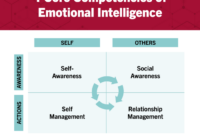In the era of data-driven decision-making, data analysis business intelligence emerges as a transformative force, empowering businesses to harness the power of information for strategic advantage. This comprehensive guide delves into the world of data analysis and business intelligence, exploring techniques, tools, and ethical considerations to equip you with the knowledge to make informed decisions and drive business success.
Data analysis business intelligence is essential for businesses to make informed decisions and gain a competitive edge. With looker business intelligence , businesses can leverage advanced data visualization, exploration, and reporting capabilities to extract valuable insights from their data. This empowers them to optimize operations, identify growth opportunities, and stay ahead of the curve in today’s data-driven business landscape.
1. Data Analysis and Business Intelligence Overview

Data analysis is the process of examining and interpreting data to extract meaningful insights. Business intelligence (BI) is the use of data analysis to support decision-making in businesses.
Data analysis business intelligence is crucial for businesses to make informed decisions. With the help of business intelligence software companies , businesses can gather, analyze, and interpret data to gain valuable insights. This empowers them to identify trends, predict outcomes, and optimize operations, ultimately leading to improved performance and increased profitability.
Data analysis and BI are closely related, as BI relies on data analysis to provide insights that can help businesses make better decisions. Data analysis can be used for a variety of purposes in BI, including:
- Identifying trends and patterns
- Predicting future outcomes
- Developing new products and services
- Improving customer service
- Reducing costs
2. Data Analysis Techniques for Business Intelligence
There are a variety of data analysis techniques that can be used in BI. Some of the most common techniques include:
- Descriptive statistics: This technique provides a summary of the data, including measures of central tendency (such as mean and median) and measures of variability (such as standard deviation and variance).
- Inferential statistics: This technique allows researchers to make inferences about a population based on a sample. For example, a researcher might use inferential statistics to determine if there is a significant difference between the mean of two groups.
- Regression analysis: This technique allows researchers to predict the value of a dependent variable based on the values of one or more independent variables. For example, a researcher might use regression analysis to predict sales based on advertising spending.
- Time series analysis: This technique allows researchers to analyze data that is collected over time. For example, a researcher might use time series analysis to identify trends in sales data.
- Data mining: This technique allows researchers to extract hidden patterns and relationships from data. For example, a researcher might use data mining to identify customer segments.
3. Data Visualization for Business Intelligence
Data visualization is the process of presenting data in a graphical format. Data visualization is important for BI because it allows users to quickly and easily understand the data. Some of the most common types of data visualizations include:
- Charts: Charts are a graphical representation of data that shows the relationship between two or more variables. For example, a bar chart might show the sales of a product over time.
- Graphs: Graphs are a graphical representation of data that shows the relationship between two or more variables. For example, a line graph might show the relationship between sales and advertising spending.
- Maps: Maps are a graphical representation of data that shows the location of data points. For example, a map might show the sales of a product by region.
- Dashboards: Dashboards are a collection of data visualizations that provide a quick and easy way to monitor key performance indicators (KPIs). For example, a dashboard might show the sales, profits, and customer satisfaction of a business.
Concluding Remarks: Data Analysis Business Intelligence

Data analysis business intelligence is not just about crunching numbers; it’s about unlocking insights that drive innovation, optimize operations, and create a competitive edge.
As technology continues to advance, the future of data analysis and business intelligence holds immense promise, with artificial intelligence and machine learning poised to revolutionize the way we make decisions. Embrace the power of data, and empower your business to thrive in the digital age.
Data analysis business intelligence is crucial for making informed decisions. To leverage this data effectively, you need the right tools. Business intelligence reporting software provides powerful features that simplify data analysis, allowing you to create comprehensive reports and dashboards.
These reports empower you to gain actionable insights, identify trends, and optimize your business strategies, ultimately driving data-driven decision-making.
FAQ Summary
What is the difference between data analysis and business intelligence?
Data analysis involves examining data to uncover patterns and trends, while business intelligence leverages data analysis to provide insights and support decision-making.
How can data visualization enhance business intelligence?
Data visualization transforms complex data into visual representations, making it easier to understand and identify trends, patterns, and outliers.
What are the ethical considerations in data analysis and business intelligence?
Ethical considerations include data privacy, security, and ensuring data is used responsibly and without bias.




